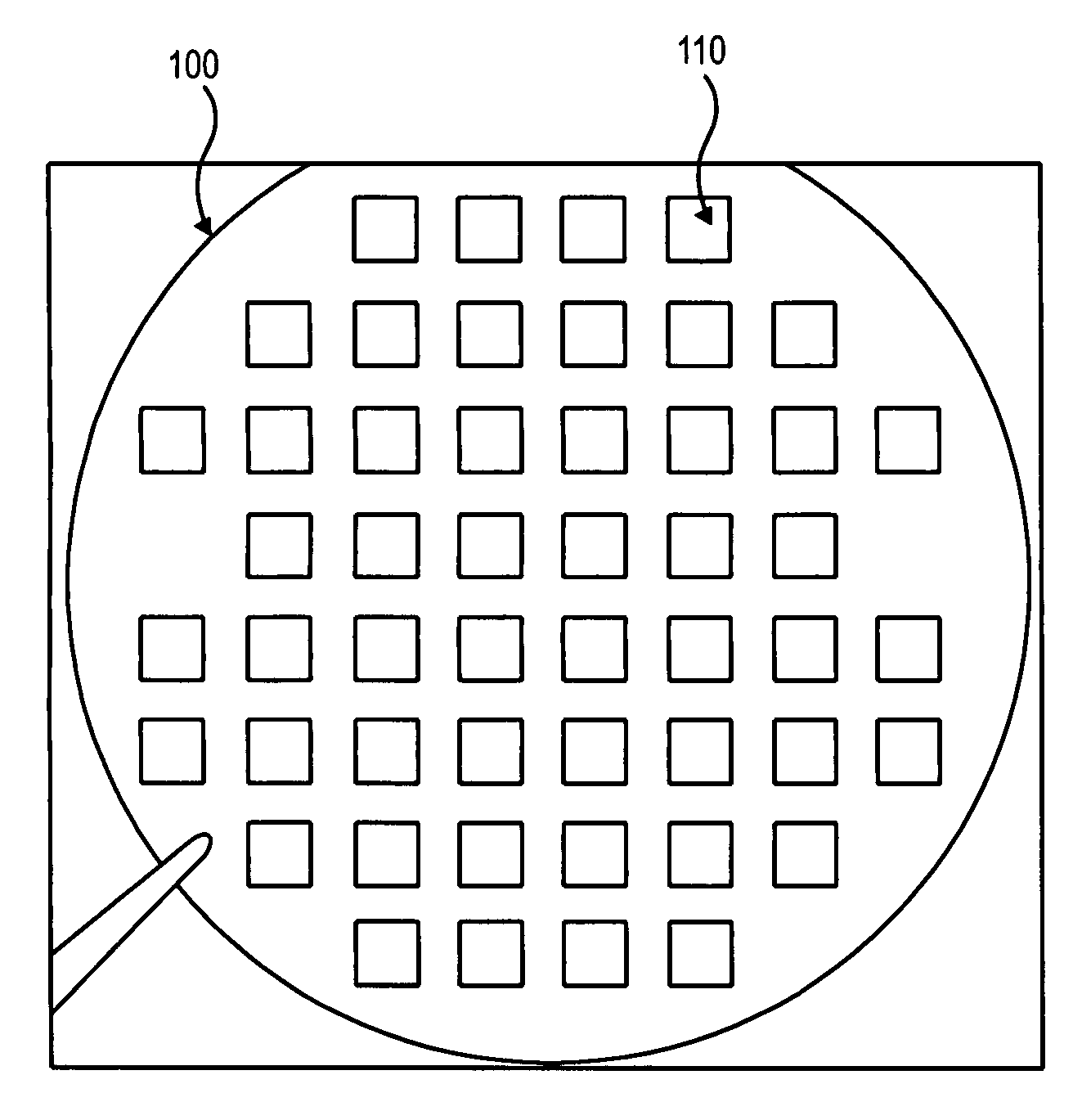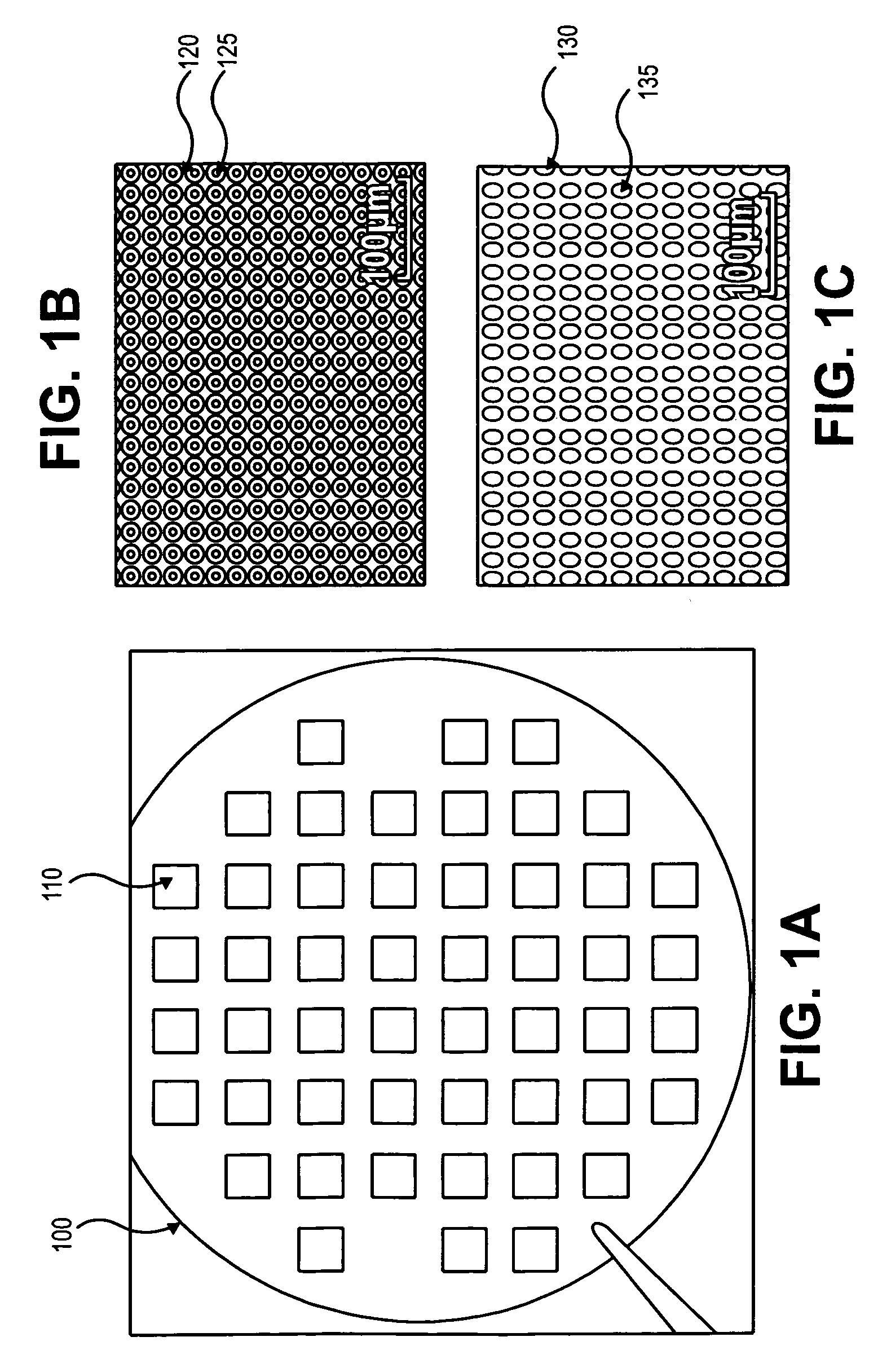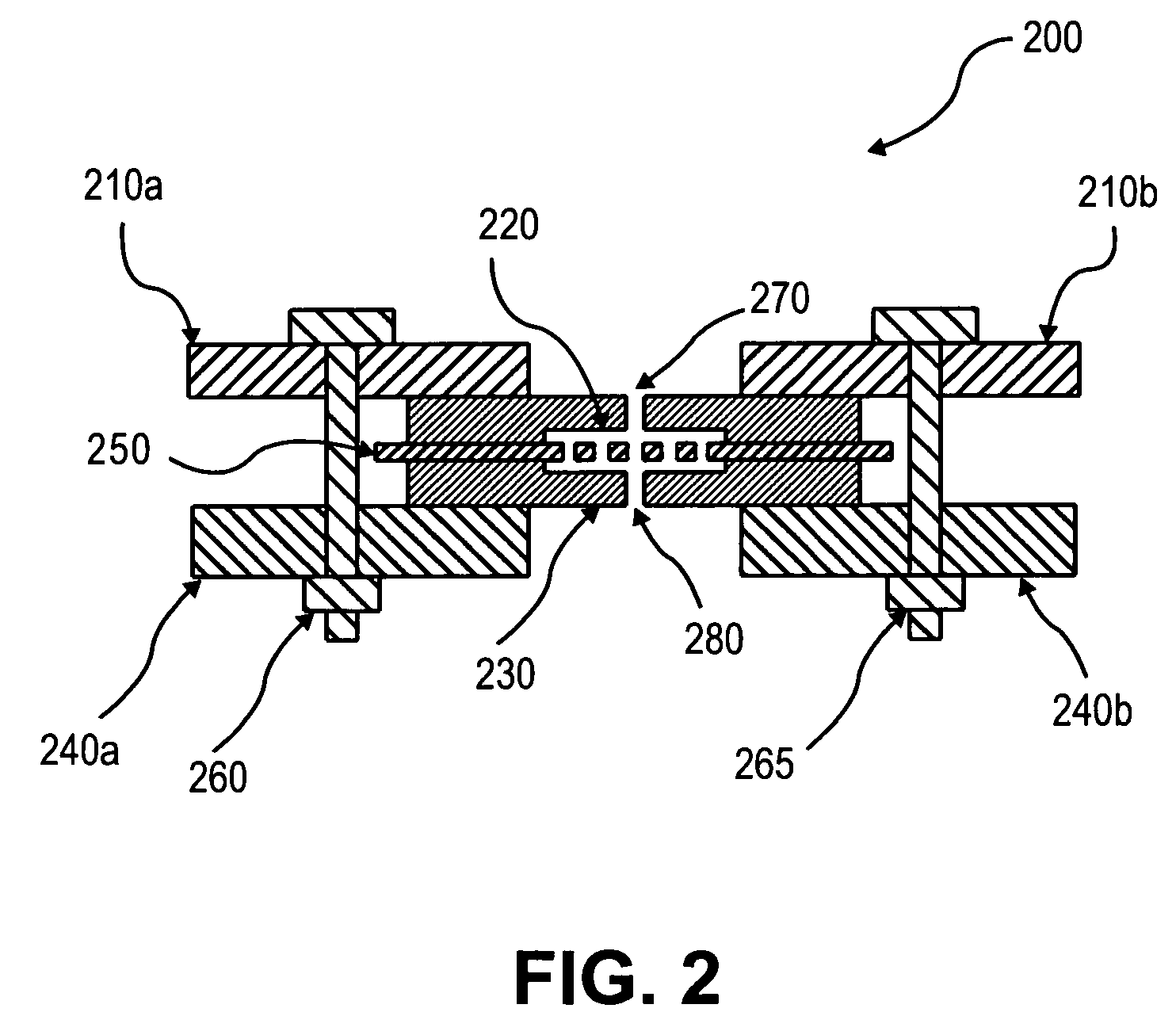Membrane filter for capturing circulating tumor cells
a membrane filter and tumor cell technology, applied in tissue culture, biological material analysis, after-treatment of tumors, etc., can solve the problems of insufficient sensitivity, efficiency and specificity, large human intervention, and high cost, and achieve high-efficiency capture.
- Summary
- Abstract
- Description
- Claims
- Application Information
AI Technical Summary
Benefits of technology
Problems solved by technology
Method used
Image
Examples
Embodiment Construction
[0022] In one aspect, the present invention provides a novel membrane filter device for capturing, for example, low concentration circulating tumor cells (CTC). The device includes a parylene substrate having an array of holes with a predetermined geometric design.
[0023] As used herein, the term “parylene” refers to a polymer having formulae I, II, and III or combinations thereof. The polymer can be a homopolymer, a copolymer, a polymer blend or combinations thereof. R1, R2, R7 and R8 are each independently H, alkyl, heteroalkyl, aryl or halogen. The alkyl can be a C1-C6 hydrocarbon radical. The halogen is Cl, F, Br, or I. Heteroalkyl is an alkyl substituent containing at least one heteroatom, such as O, S, N, Si or P.
R3-R6 are each independently H, alkyl, aryl, halogen, heteroalkyl, hydroxyl, amino, alkylamino, arylamino, aroylamino, carbamoylamino, aryloxy, acyl, thio, alkylthio, cyano, alkoxy. An alkyl group can be a substituted alkyl having up to 29 carbon atoms. A substitut...
PUM
| Property | Measurement | Unit |
|---|---|---|
| thickness | aaaaa | aaaaa |
| thicknesses | aaaaa | aaaaa |
| diameter | aaaaa | aaaaa |
Abstract
Description
Claims
Application Information
 Login to View More
Login to View More - R&D
- Intellectual Property
- Life Sciences
- Materials
- Tech Scout
- Unparalleled Data Quality
- Higher Quality Content
- 60% Fewer Hallucinations
Browse by: Latest US Patents, China's latest patents, Technical Efficacy Thesaurus, Application Domain, Technology Topic, Popular Technical Reports.
© 2025 PatSnap. All rights reserved.Legal|Privacy policy|Modern Slavery Act Transparency Statement|Sitemap|About US| Contact US: help@patsnap.com



